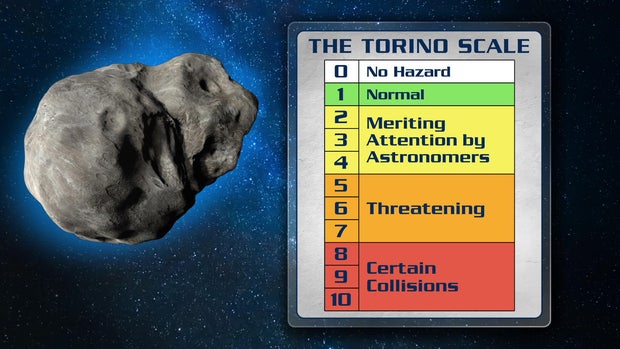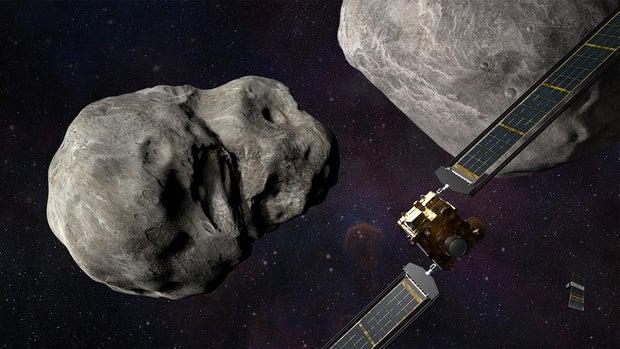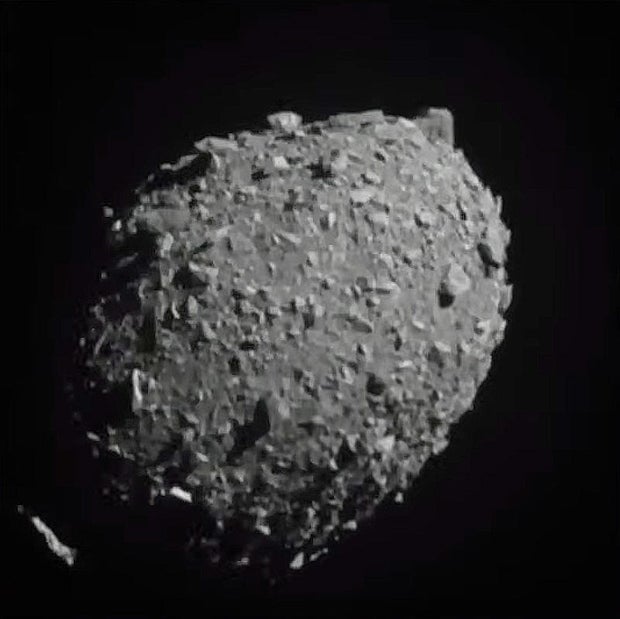Little asteroids strike the Earth's atmosphere every single day. It's the big ones we worry about, as depicted in such Hollywood extravaganzas as "Armageddon" and "Don't Look Up."
"I've never been able to sit still watching any of the asteroid movies and not just want to get up and walk away," said MIT professor Richard Binzel. In addition to writing the book on asteroids, he also invented the Torino scale, a 10-point danger scale for asteroids.
"All the objects we know of today reside at zero or one, which simply means they're so small that they don't matter, or that we know for sure there's no impact possibility," Binzel said.
Correspondent David Pogue asked, "It sounds like asteroids wiping out humanity should not be at the top of our list of worries?"
"Asteroids wiping our humanity does not keep me awake at night, unless I'm at the telescope studying them!" Binzel laughed.
But there have been dangerous asteroid strikes. In 2013, a 60-foot rock from space injured 1,500 people, and damaged thousands of buildings, in Russia.
NASA thinks it's time to prepare for the next one.
But probably not the way an asteroid was dealt with in "Deep Impact" – by blowing it up.
"That's probably not the best way of doing it," said NASA's Elena Adams. "Because if you blow up an asteroid, you create a large number of chunks. And those chunks will still be going the same direction. The easiest thing to do is to actually just change its direction slightly, and then it will miss Earth entirely."
Adams is the lead engineer on the DART mission, a joint venture of NASA and the Johns Hopkins Applied Physics Laboratory. It took off last November on a mission to change an asteroid's path by crashing into it.
DART stands for Double Asteroid Redirection Test because its target is, in fact, a double asteroid that orbits the sun. The main asteroid, called Didymos, is about half-a-mile across. It has a moonlet of its own, and that's our target.
The goal is to bump the moonlet's orbit slightly closer to Didymos. "Just a little nudge, a tap," said Adams. "It's basically like throwing a tennis ball at a 747. If it goes fast enough, you're gonna move it. It's a first test of, can we actually do it?"
As a bonus, the 1,200-pound spacecraft is a veritable science fair of technology tests that could be useful in future missions: super lightweight solar panels that unroll; a new ion thruster; and a separate little camera satellite that DART carried in its pocket, the Italian Space Agency's LICIACube, so we can all enjoy pictures of the crash.
There's even a new self-driving computer, SMART Nav, which takes over when DART is too far away to control from the Earth
"This is the crown jewel of the spacecraft," Adams said. "So, we're going to see how well it works."
DART is the first major project of a NASA department called the Planetary Defense Coordination Office.
NASA's Lori Glaze leads the division that oversees planetary defense.
"The ones that really are the civilization-ending-size asteroids, we know; we've already found 99% of those," Glaze said. "The smaller ones that could have regional damage, there are some out there that we don't know about. So, we're actually right now already building the next telescope, a space telescope called the Near-Earth Object Surveyor (NEO Surveyor), to search the sky 24 hours a day."
This past Monday, 10 months after liftoff, DART approached its target: Seven million miles from Earth, traveling four miles a second, toward an asteroid moonlet that nobody's ever seen.
And to make matters even tougher? Adams said, "We also don't know what it's made out of, we don't know its shape. How do you hit something where you don't even know its shape?"
At 19 minutes to impact, you could see the moonlet Dimorphos for the first time.
NASA's DART hit the bullseye.
In a few weeks, NASA will calculate how much that little moon moved. But we already know what happened to Elena Adams' $325 million baby. "It's like a Ferrari, right? It's just a beautiful piece of equipment, and then the whole point of it is to go smash into a rock!" she laughed.
"That's sad!" said Pogue.
"But also kinda glorious!"
For more info:
Story produced by Julie Kracov. Editor: Mike Levine.
https://news.google.com/__i/rss/rd/articles/CBMiZWh0dHBzOi8vd3d3LmNic25ld3MuY29tL25ld3MvZGFydC1taXNzaW9uLWRvdWJsZS1hc3Rlcm9pZC1yZWRpcmVjdGlvbi10ZXN0LWhvdy1uYXNhLWhpdC10aGUtYnVsbHNleWUv0gEA?oc=5
2022-10-02 14:17:44Z
1576687942




Tidak ada komentar:
Posting Komentar